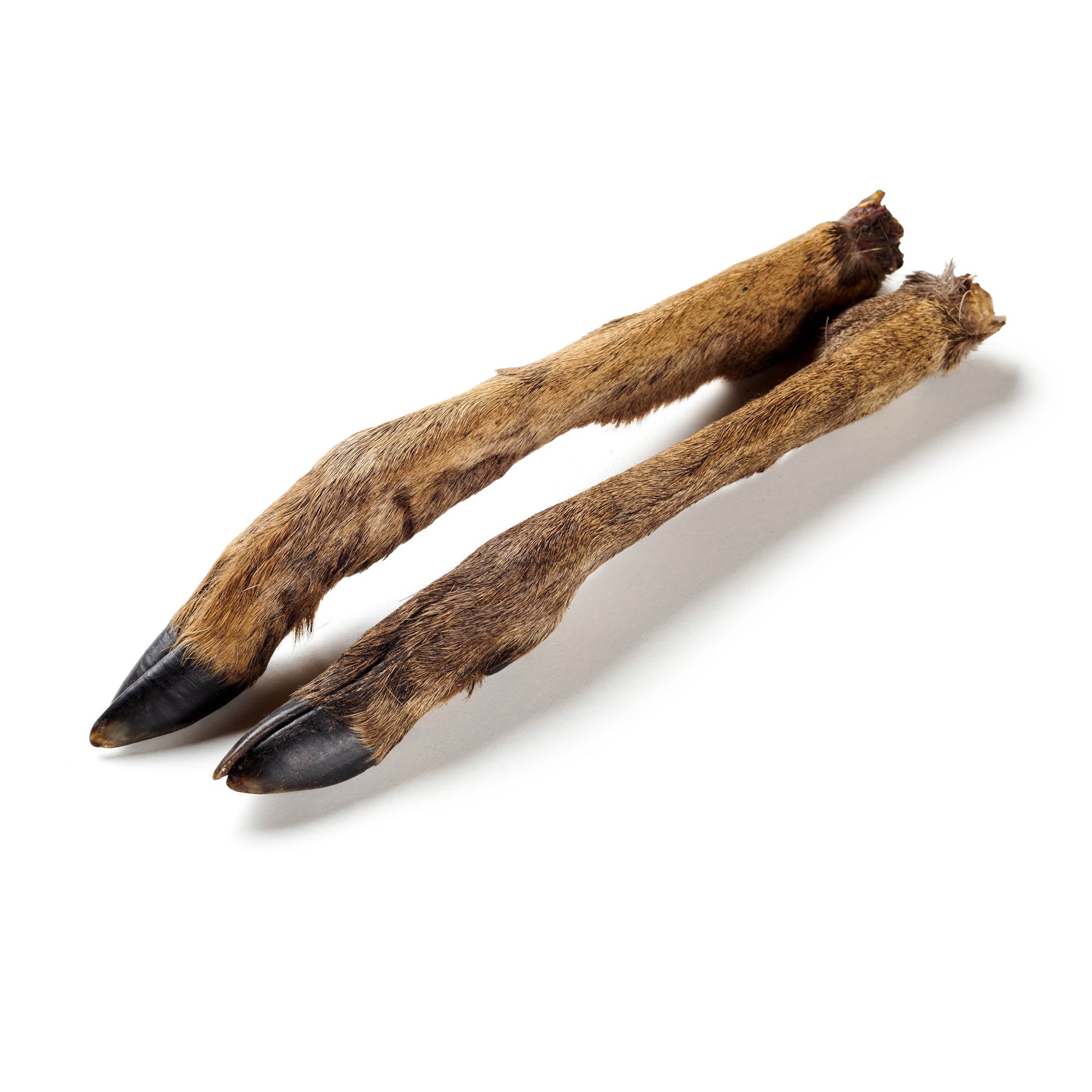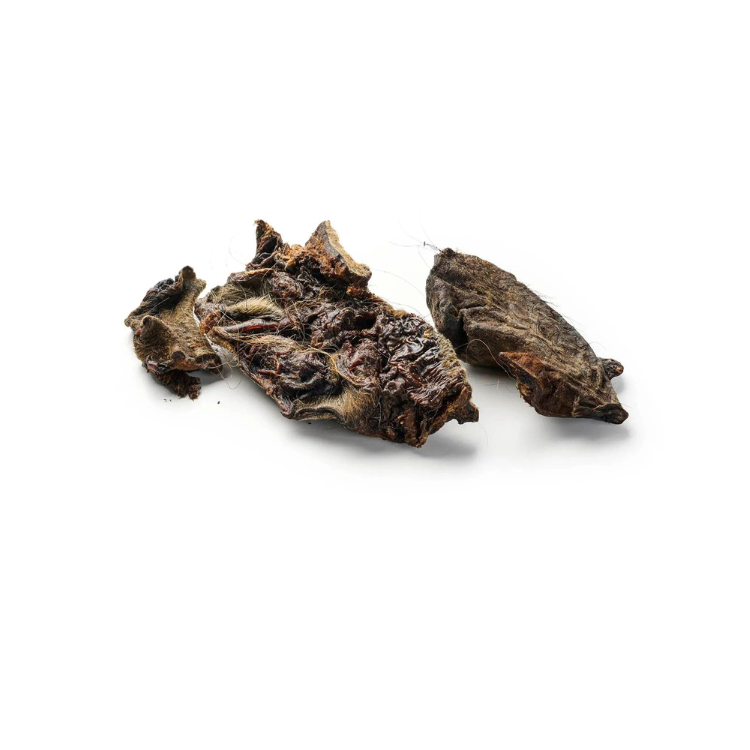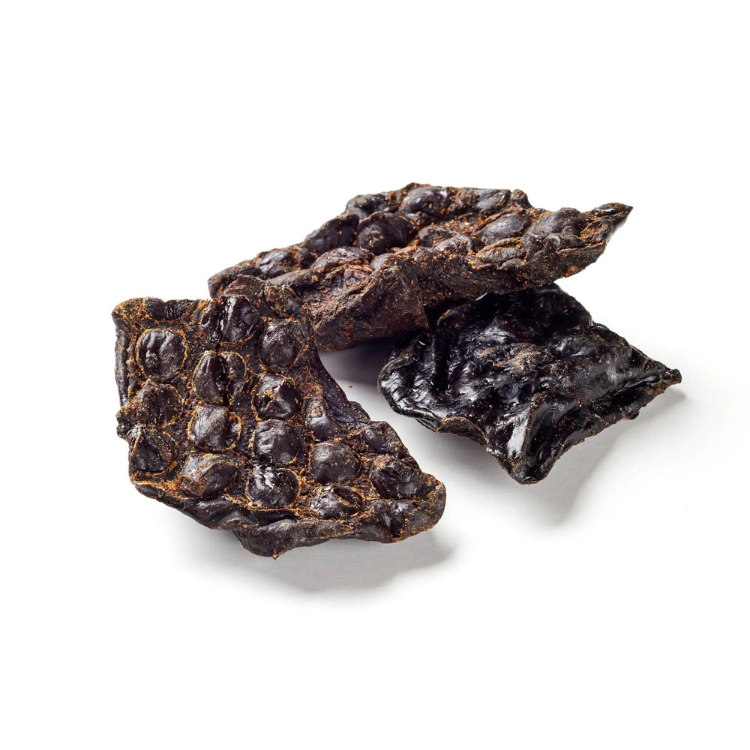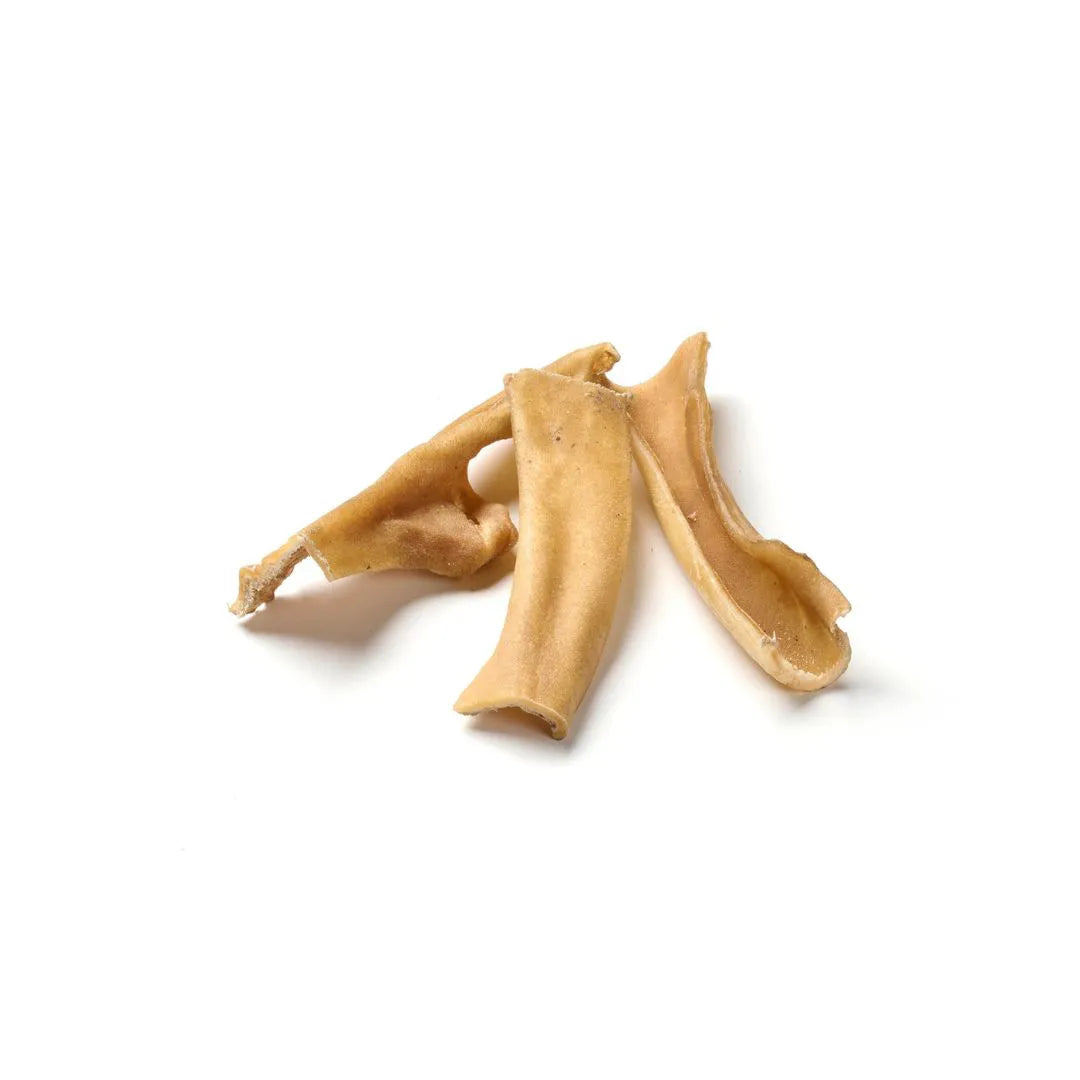
Dog training - practicing basic commands in a playful way
Share
Training a dog is one of the most important tasks for every dog owner. Basic commands such as "sit", "down" or "come" are essential to ensure a harmonious coexistence. But training doesn't have to be boring or stressful - on the contrary, it can be a lot of fun! Playful practice not only makes your dog happy, it also strengthens the bond between you.
Through playful training, your dog is not only mentally and physically challenged, but also motivated in a positive way. Instead of strict discipline, the focus is on fun, which increases your dog's willingness to learn and makes training a pleasant experience for both of you.
Content: Dog training - practicing basic commands in a playful way
- Important basic commands
- Benefits of playful training
- Playful training methods
- Tips and tricks for successful training
- Avoid common mistakes
- Conclusion
High-quality dog snacks to pamper your dog, now available!
In this article, you'll learn how to teach the most important basic commands in a fun way and why this method is so effective. From basic commands to creative training methods and tips for successful training - here you'll find everything you need to train your dog in a fun and effective way.
Important basic commands
Basic commands are the basis of any good dog training. They provide security and clarity in everyday life and help your dog to find its way in the human world. The following commands are particularly important and can be trained in a playful way.
Seat
"Sit" is one of the most basic and useful commands in dog training. It helps to control the dog in many everyday situations. To practice "sit" in a playful way, hold a treat above your dog's head and slowly move it backwards. Your dog's natural reflex will make him sit down to get a better look at the treat. As soon as the dog sits, give him the treat and praise him profusely.
Repeat this process regularly and soon your dog will sit on command. Additionally, you can vary the training by moving the treat different distances back or practicing in different environments to improve your dog's responsiveness and understanding.
It is also helpful to incorporate the "sit" command into everyday situations. For example, you can ask your dog to sit before feeding, when putting on the leash, or before crossing the street. This encourages the use of the command in everyday life and builds confidence and control in different situations.
Another step is to gradually introduce distractions after your dog has mastered the command in calm environments. Start with small distractions and increase the intensity to ensure your dog follows the command even in busier and more exciting situations.
Reward your dog repeatedly for correct behavior, but vary the type of reward to keep training interesting. In addition to treats, toys, verbal praise or petting can also be used as rewards. Once your dog has mastered the "sit" command, you can also do without treats and switch to clicker training, which is described later in the text. Clicker training offers an effective way to reinforce desired behavior without having to rely on treats. With patience, consistency and positive reinforcement, you will see your dog carry out the "sit" command with enthusiasm and reliability.
Place
The "down" command is also very important as it helps your dog to calm down and stay in one place. To practice "down", take a treat and slowly move it from your dog's nose down between his front legs. Once he lies down, reward him and praise him profusely.
Over time, your dog will learn to lie down on command. It is helpful to do training in different environments and with different distractions to increase the reliability of the command. Vary the training locations and times to ensure your dog follows the command in different situations.
You can also integrate the "down" command into everyday situations. For example, you can ask your dog to lie down when you are waiting for someone or when you want him to rest. This encourages the practical application of the command and strengthens control and trust in everyday life.
Come
"Come" is a vital command that signals your dog to come back to you. Begin training in a distraction-free environment. Sit down, call your dog's name followed by "come" while opening your arms. When your dog comes to you, reward him with a treat and lots of praise.
Practice this command regularly and gradually increase the distractions to improve your dog's responsiveness. It is important that your dog masters the "come" command in different situations and environments. Start with short distances and few distractions and gradually increase the distance and number of distractions.
An effective way to reinforce the "come" command is to play recall games. You can hide in different places in the house or garden and call your dog. When he finds you, reward him generously. These games make training fun and strengthen the bond between you.
You can also vary the training by using different rewards such as toys or verbal praise. The goal is to make the recall command a positive and rewarding experience for your dog so that he will happily and reliably return to you.
By training regularly and consistently, your dog will learn to follow the "come" command even in distracting and stressful situations. Patience and positive reinforcement are crucial to establishing the desired behavior permanently.
Stay
The "stay" command is crucial for controlling your dog in different situations. Start by putting your dog in a "sit" or "down" position. Hold the palm of your hand in front of him and say "stay". Take a step back and when your dog stays in the position, return to him and reward him.
Gradually increase the distance and the length of time your dog must stay before being rewarded. It is important to make the exercise progressively more difficult to encourage your dog's patience and understanding. Start with short intervals and small distances, and gradually increase them once your dog has mastered the command.
Practice the "stay" command in different environments and under different distractions to increase the reliability of the command. Be careful not to overwhelm your dog and end each training session on a positive note.
A helpful technique is to reward the dog in the "stay" position when he remains calm and gradually increase the reward intervals. This reinforces the desired behavior and increases the likelihood that your dog will follow the command in different situations.
The "stay" command is particularly useful in everyday life, for example when you need to keep your dog in a safe place while you do something. With patience, consistency and positive reinforcement, your dog will learn to stay calmly and reliably in the desired position.
Spoil your four-legged friend with our delicate chew items!
Foot
The heel command is extremely important for walks, as it teaches your dog to walk by your side in a safe and controlled manner. Mastering this command can make walks much more enjoyable and safer, especially in busy or potentially dangerous environments.
However, the "heel" command is not easy to learn. It requires patience, consistency and regular training. The level of difficulty can vary from dog to dog. Some dogs learn the command more quickly, while others need more time. This can also depend on the breed. Dog breeds such as herding dogs can learn this command more quickly, while hunting dogs , for example, find it a little more difficult.
Begin training in a calm environment, place your dog in the "sit" position and hold a treat in your left hand. Say "heel" and begin walking while holding the treat close to your left side. Reward your dog when he stays in the correct position. Be sure to reward him immediately once he is correctly at your side to reinforce the desired behavior. Repeat training regularly to reinforce the behavior.
In addition to treats, rewards can include praise, petting, or your dog's favorite toy, depending on what motivates your dog the most. Clicker training can also be a precise method to mark desired behavior and avoid confusion. A loose leash can help keep your dog in the right position; gently tug on the leash if your dog deviates from the side, and reward him when he starts walking correctly again.
Vary the pace and direction during training so that your dog learns to orientate himself to your movement pattern. Include short play breaks to make training dynamic and fun. Start in a distraction-free environment and gradually increase the difficulty by practicing in different environments and with more distractions. Make sure that training sessions remain short and positive to avoid overexertion.
Dogs often learn by imitation, so it can be helpful to train your dog alongside an already well-trained dog. This helps your dog learn by observing. With patience, consistency, and positive reinforcement, your dog will soon walk reliably and happily by your side, improving control and safety during walks and strengthening the bond between you.
Benefits of playful training
Playful training has many benefits. It increases your dog's enjoyment and motivation, strengthens the bond between you and makes learning more effective. Playful exercises keep your dog engaged and focused, which speeds up the learning process. It also reduces stress and frustration that can occur with traditional training methods.
Playful training methods
There are different methods that make training fun and entertaining. These techniques will help your dog learn basic commands in a positive and stress-free way.
Clicker training
Clicker training is a positive reinforcement method that uses a clicker to mark desired behavior. The clicker makes a quick, clear sound that signals to your dog that he has done something right. Combine the clicker with training snacks to reinforce the association. This method is a quick and effective way to teach basic commands.
The first step in clicker training is to get your dog used to the sound of the clicker. This is called "conditioning." Click the clicker and immediately give your dog a treat. Repeat this process several times until your dog associates the sound of the clicker with a reward. This creates a strong foundation for further training.
Once your dog is conditioned, you can use the clicker to train specific behaviors. Let's take the "sit" command as an example. Hold a treat above your dog's head and slowly move it backwards. Once your dog sits, click the clicker and give him the treat. Repeat this process, and your dog will quickly understand that "sit" means to sit down.
Another advantage of clicker training is its precision. The clicker allows you to mark the exact moment when your dog shows the desired behavior, which is easier for the dog to understand than verbal commands alone. This precision helps your dog learn faster and avoid misunderstandings.
Because the method is based on positive reinforcement, your dog will be encouraged to try and learn new behaviors, resulting in a click and a reward. This can be especially helpful if you want to teach your dog more complex tricks or behaviors.
Clicker training is not only effective, but also a fun way to work with your dog. It makes training more enjoyable for both parties and ensures a positive and relaxed learning atmosphere. With a little practice and patience, you will be amazed at how quickly your dog learns new commands and tricks.
Hide and seek
Hide and seek games are a great way to practice the "come" command while encouraging your dog's play instinct. Hide in a spot in the house or yard and call your dog. When he finds you, reward him with a treat and lots of praise. This game improves recall and is fun for both of you.
The key to successful hide-and-seek games is to gradually increase the difficulty. To start with, hide in easily accessible places so your dog can find you quickly. As your dog gets better at finding you, you can make the hiding places more challenging by hiding behind furniture, bushes, or other obstacles. This keeps the game exciting and mentally challenging your dog.
Hide and seek games not only encourage recall, but also strengthen the trust and bond between you and your dog. Your dog learns that following your call always leads to a positive and joyful experience. This can be especially helpful if your dog is called in a distraction-rich environment.
Another benefit of hide-and-seek games is that they keep your dog physically and mentally active. Searching for you requires your dog to use his senses, especially his sense of smell, to find you. This is a great way to burn off excess energy and keep your dog happy and well-adjusted.
You can also vary the game by involving other family members or friends in turns. This teaches your dog to respond to different voices and encourages social adaptability. Additionally, hiding favorite toys or other objects can add an extra dimension to the game and further motivate your dog.
Delicious dog snacks for pure enjoyment are available from us!
An additional tip is to play the game outside in nature. Parks or forests offer many exciting hiding places that your dog can explore. This makes the walks more varied and entertaining for both of you.
Hide and seek is an effective and fun way to reinforce the "come" command, strengthen the bond, and challenge your dog both mentally and physically. Regularly incorporating this game into your training will ensure that your dog always responds happily and reliably to your call.
Retrieving games
Fetch games are ideal for practicing the "fetch" command while also using your dog's natural instinct to play. Retrievers are obviously superior here, but any other breed of dog can enjoy it too. These games not only promote physical exercise, but also cooperation and the bond between you and your dog. Fetch is fun and is an excellent way to teach your dog important commands in a playful way.
Start training with a favorite toy that your dog likes to carry in his mouth. Throw the toy a short distance away and encourage your dog to fetch it. When he picks up the toy and comes back to you, reward him with a treat and lots of praise. Repeat this process several times to make sure your dog understands that he is supposed to bring the toy back to receive a reward.
An important aspect of retrieving training is to gradually increase the difficulty. To start with, the distance you throw the toy should be relatively short. As your dog gains practice and confidence, you can gradually increase the distance. This keeps the game interesting and challenges your dog both mentally and physically.
To further reinforce the "fetch" command, you can vary the game by using different dog toys or objects. This will help your dog to understand and carry out the command regardless of the object. Make sure the toys are safe and suitable for dogs to avoid injury.
Fetch games are also a great opportunity to practice the "let go" command. When your dog brings the toy back to you, have a treat ready and say "let go" while holding the treat in front of his nose. As soon as he lets go of the toy, give him the treat and praise him. This exercise reinforces control and trust between you.
Regular games of fetch will not only keep your dog physically fit, but will also stimulate him mentally. These games provide a fun and effective way to practice important basic commands while building a strong, positive relationship with your dog.
Trick training as a basis
Trick training is not only fun, but it also helps reinforce basic commands and encourages mental stimulation in your dog. Start with simple tricks like "give paw" or "roll over." These tricks build on basic commands like "sit" and "down" and use the skills your dog has already learned.
To practice " give paw ," put your dog in the sit position, hold a treat in his hand, and say "paw." Gently lift his paw and reward him once he has the paw in your hand. For the "roll" trick, put your dog in the sit position, hold a treat in front of his nose, and slowly pass it over his shoulder so that he turns to follow the treat.
Trick training not only reinforces basic commands, but also promotes the bond between you and your dog. It creates a positive and fun learning environment that motivates and mentally stimulates your dog. In addition, it helps to improve trust and communication skills between you. Regularly practicing tricks keeps training varied and interesting, which contributes significantly to your dog's mental and physical health.
Use interactive toys
Interactive toys are a great way to mentally challenge your dog while practicing commands. These toys encourage your dog's problem-solving skills and add variety to training. Use toys that contain treats or natural chews to motivate and reward your dog.
For example, you can use a food ball or an intelligence toy that your dog has to move or manipulate to get to the treats. This keeps him busy and rewards him for his efforts. Interactive toys are especially useful for practicing commands like "sit" or "stay" while your dog waits to get the toy.
These toys not only provide mental stimulation, but also help to relieve excess energy and prevent boredom. They are a great addition to your training and will keep your dog happy and engaged.
Tips and tricks for successful training
Successful training requires patience, consistency and positive reinforcement. Keep the training sessions short and regular to avoid overexertion. Ideally, the sessions should not last longer than 10-15 minutes, but should take place several times a day. This will help your dog to concentrate better and stay motivated.
Reward your dog for correct behavior and be patient when he makes mistakes. Positive reinforcement, such as treats and snacks , praise and toys, motivates your dog and encourages learning. Be sure to reward immediately so your dog can directly associate the reward with the desired behavior. Adapt the exercises to your dog's temperament and needs for the best learning success.
Every dog is unique, and what works for one may not be suitable for another. Some dogs learn faster with treats, while others respond more to praise or toys. Observe what your dog enjoys most and use this to your advantage.
Make sure you start in a distraction-free environment, especially when your dog is learning new commands. Once your dog has mastered the basic commands in a calm environment, you can increase the difficulty by gradually adding distractions. This will help your dog focus even in more challenging situations.
Be consistent with the commands and signals you use. Avoid using different words or hand signals for the same behavior, as this can confuse your dog. Consistency is the key to success.
Be sure to read your dog's body language. Dogs communicate a lot through their body language, and it's important to recognize and respond to these signals. If your dog shows signs of stress or tiredness, take a break and resume training later.
Use training as an opportunity to strengthen the bond with your dog. Training should be a positive and enjoyable experience for both of you. By learning and playing together, you build trust and affection, which forms the basis for a harmonious relationship.
By following these tips and tricks, you can make training effective and enjoyable for your dog. With patience, consistency and positive reinforcement, you will make great progress together and successfully master the basic commands.
Avoid common mistakes
When training a dog, mistakes can easily be made that hinder progress and cause frustration. To make training smooth and effective, you should consider the following points:
- Avoid overexertion: Keep training sessions short and varied. Plan several short sessions per day instead of long training sessions.
- Be patient and stay calm: Avoid impatience and frustration, as negative emotions have a demotivating effect. Stay calm if your dog doesn't immediately understand what you want from him.
- Consistency in commands: Always use the same words and hand signals for the same behavior. Consistency helps your dog better understand expectations.
- Pay attention to your dog's body language: Watch for signs of stress or tiredness and take breaks if your dog shows signs of being overwhelmed.
- Use positive reinforcement: Reward correct behavior with treats, praise or toys. Avoid punishments so as not to undermine your dog's trust.
- Plan regular breaks: Give your dog time to process what he has learned and ensure sufficient recovery periods between training sessions.
- Maintain a positive attitude: Patience and a positive attitude are the key to successful training. Respect your dog's individual learning pace.
- Not too many treats: Even if training your dog is much easier with training snacks, you should be careful not to use too many treats to ensure a healthy diet and avoid obesity in your dog . A varied reward with praise, toys or caresses can be just as effective and keeps the dog motivated. This way, the training remains balanced and sustainable.
These tips will help you make training effective and enjoyable, ensuring you get the best results and build a strong, trusting relationship with your dog.
Conclusion
Training your dog doesn't have to be stressful or boring - on the contrary, practicing basic commands in a playful way can be a lot of fun for both you and your dog. By using positive reinforcement and varied training sessions, you not only strengthen your dog's understanding of important commands such as "sit", "down" or "come", but also promote the bond and trust between you.
By using clicker training, hide-and-seek, fetch games, trick training and interactive toys, learning becomes an exciting and motivating experience for your dog. Make sure to keep the training sessions short and positive to avoid overexertion and to keep your dog's attention high.
By using these methods and avoiding common mistakes, you lay the foundation for successful training and harmonious coexistence. With patience, consistency and a positive attitude, you will see how your dog learns the basic commands with enthusiasm and your time together is enriched.
Treat your dog to something special with our chew products!


















